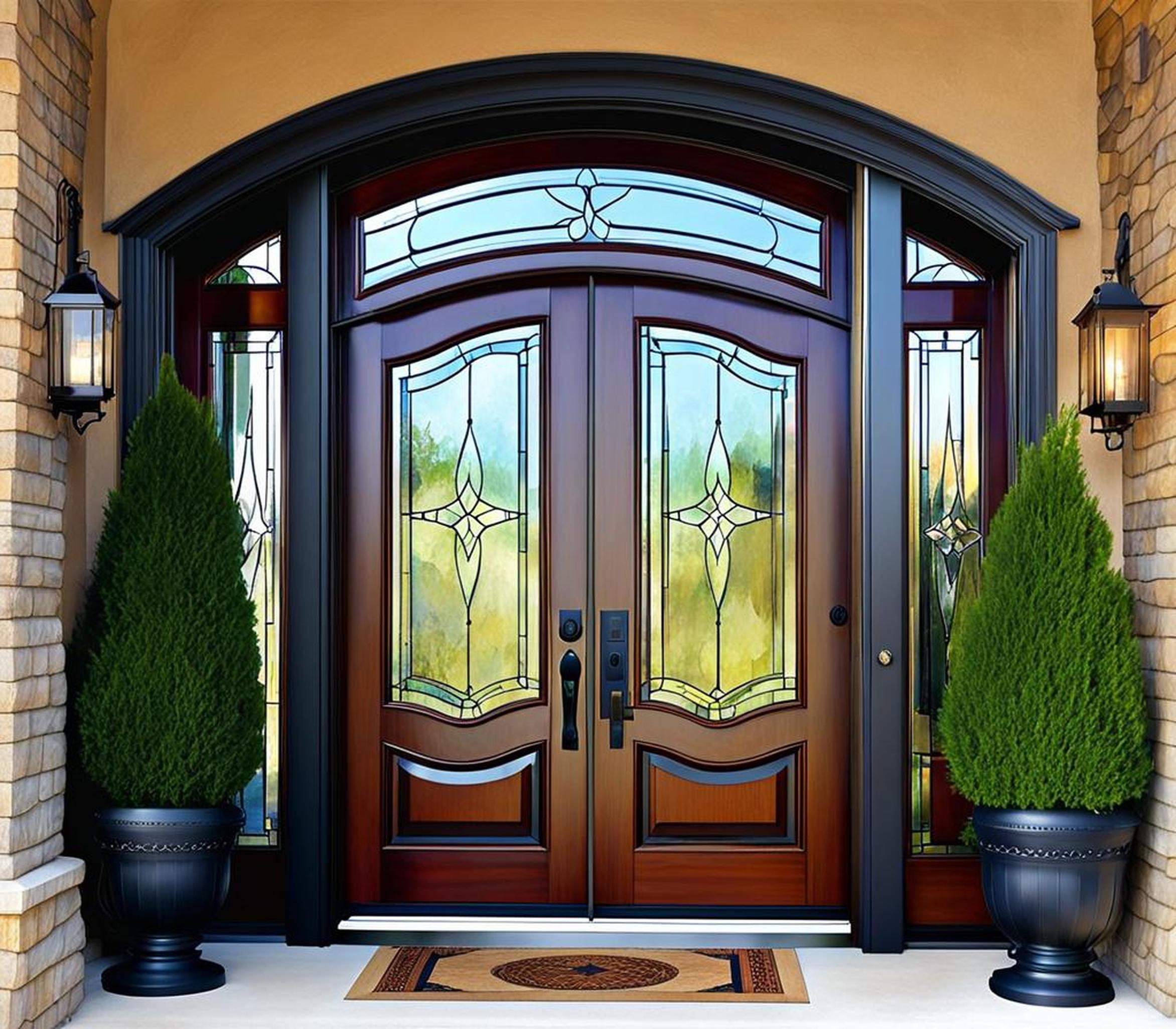The front door is the focal point of any home’s curb appeal, but glass doors can present privacy challenges. Homeowners want to let ample natural light into their entryways without sacrificing security or peace of mind. Fortunately, today’s options for covering front door glass provide the perfect balance of visibility, discretion and style.
Frosted, opaque and etched glass offer customizable privacy while allowing sunlight to filter through. Window films and smart glass solutions create privacy on demand. Strategically hung curtains and precisely aligned blinds transform glass doors into charming canvases. Read on to discover glass coverings that unlock your front door’s full potential.
Etched and Frosted Glass Offer Permanent, Decorative Privacy
For a permanent privacy solution, etched, frosted and opaque glass coverings provide translucent windows that obscure views and outlines while welcoming daylight. These specialized glass panes diffuse light through subtly textured surfaces.
Etched glass is an elegant option, carved with designs for stunning visual appeal. Choose from geometric patterns, nature motifs, monograms and more. Deeper etching provides more effective privacy screening. Combinations of etching and sandblasting create striking contrast.
The cost of etched glass depends on the door’s size and the complexity of the custom design. On average, expect to invest $100-$300 for etching an existing glass pane. For new installation with sandblasted artisan glass, costs are $250-$600.

Pick Window Films for Affordability and Adjustability
Window films applied directly to existing glass are a wallet-friendly solution. Frosted and patterned films allow natural light transmission while obscuring views. Install yourself or hire a professional for under $100.
These thin adhesive coverings have a textured surface that scatters light. Privacy levels range from translucent frosted to near-opaque. Many films feature decorative patterns for added visual interest.
Measuring carefully, cut films to fit your glass panes precisely. Use a spray bottle and squeegee for smooth, bubble-free application. Films can degrade and peel over time but are easily replaced.
Soften Glass Doors with Fabric Curtains and Blinds
For adjustable privacy, curtains and blinds adjacent to glass make doors cozy and welcoming. These window treatments provide discretion without fully blocking sunlight.
Lightweight sheer curtains offer a gentle veil, while opaque fabrics bring full privacy when closed. Draw attention to your front door with energetic patterns and colors. Spring for blackout linings to darken entryways.
Mount curtain rods tightly next to door frames, or install movable tracks on the glass itself. For blinds, situate manual or motorized horizontal slats between glass panes or hanging freely on either side of the door.
Between-Glass Blinds: The Discreet Privacy Solution
If curtains and shades still permit peeping, between-glass blinds seal the deal. Horizontal slats encapsulated within double-pane glass block views and filter light.
Remotely control blinds with smart automation systems. Or opt for classic cords between glass layers. Colors and materials like wood or faux wood complete the look. Consider built-in blinds when renovating entryways.
While installation is permanent, between-glass blinds bring privacy, insulation, and noise reduction. Many homeowners feel the tradeoff is worthwhile to transform glass doors from glaring liability to stylish asset.
When privacy is a priority but natural light still desired, creatively covering glass entryways delivers the best of both worlds. Etched and frosted glass, smart films, billowing fabrics and neatly aligned blinds all filter sunlight while preventing unwanted eyes.
Balance aesthetic appeal, visibility, insulation and ease of use when selecting window treatments. With today’s options, it’s possible to welcome daylight through front door glass without sacrificing security and discretion.
